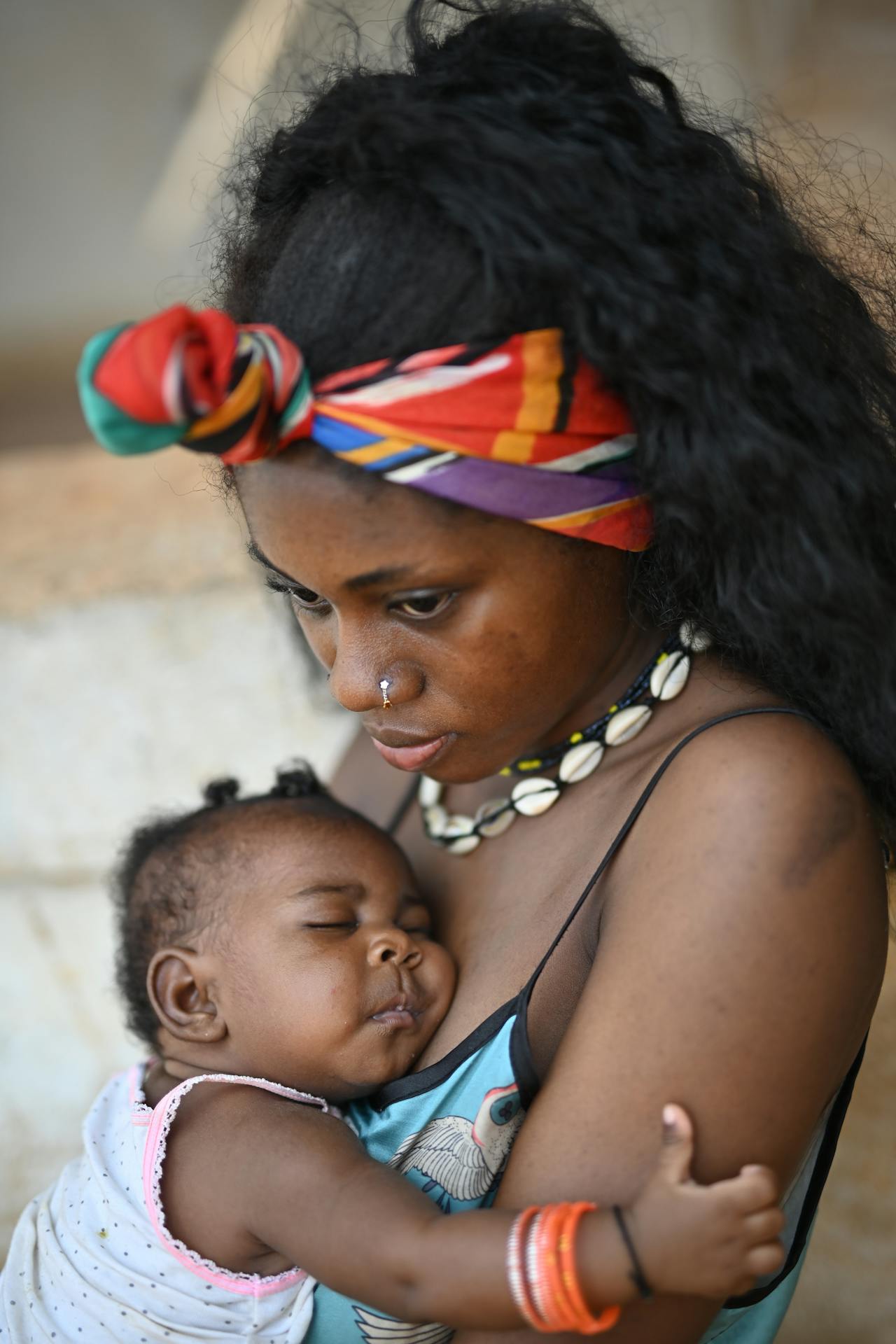Impact of Contaminated Water on Maternal and Child Health

Introduction
The need for water is inevitable, it is a necessity for life. We use it every day for drinking, cooking, and cleaning. But what happens when the water we rely on is not clean? Clean water is something a lot of us take for granted. We pour out water in a glass to drink without a second thought. But for millions of people around the world, especially mothers and children, access to safe drinking water is a daily struggle. Contaminated water is a serious issue that affects health, particularly for those who are most vulnerable, in this case, mothers and children.
This article will explore how dirty water impacts the health of pregnant women, babies, and young children.
What is Contaminated Water?
Before we get into the health impacts, let’s understand what we mean by contaminated water. Simply put, contaminated water is water that contains harmful substances. These can be:
- Germs: Tiny living things like bacteria and viruses that can’t be seen with our naked eyes and have the ability to make us sick.
- Chemicals: Substances that don’t belong in water, such as pesticides or industrial waste.
- Parasites: Small organisms that live off other living things and can cause diseases.
Water can become contaminated in many ways. Sometimes, human and animal waste gets into water sources. Other times, chemicals from factories or farms seep into the ground and pollute wells and rivers. Natural disasters like floods can also mix dirty water with clean water sources.
Why Are Mothers and Children More at Risk?
Mothers and children are especially vulnerable to the dangers of contaminated water.
Here are 4 reasons why:
1. Developing bodies: Babies and young children are still growing. Their bodies are more sensitive to harmful substances in water.
2. Weaker immune systems: The body’s defence against illness is not as strong in young children and pregnant women.
3. Higher water needs: Pregnant women need to drink more water, which means they might take in more contaminants if the water is dirty.
4. Dependency: Babies rely entirely on their mothers or caregivers for clean water, whether for drinking or for mixing with formula.
Let’s take a look at the different ways in which contaminated water affects maternal and child health.
Effects on Pregnant Women
Pregnancy is a crucial time for both the mother and the developing baby. Clean water plays a crucial role in ensuring a healthy pregnancy.
Here are 7 ways contaminated water can affect pregnant women:
1. Dehydration: Fear of drinking contaminated water might lead some pregnant women to drink less water. This can cause dehydration, which is dangerous during pregnancy.
2. Maternal Infections: Contaminated water can also lead to infections in pregnant women, such as urinary tract infections (UTIs) or gastrointestinal illnesses. These infections can be painful and may require medical treatment, but they can also have more serious consequences if they spread to the uterus or bloodstream. In some cases, these infections have been known to cause preterm (early) labour or other complications.
3. Toxin exposure: Chemicals in water can pass from the mother to the unborn baby. This might affect the baby’s growth and development.
4. Anaemia: Some parasites in contaminated water can cause anaemia (low blood iron) in pregnant women. This can make them feel very tired and weak.
5. Malnutrition: If contaminated water causes frequent stomach upsets, the mother might not get enough nutrients for herself and the growing baby.
6. High blood pressure: Some studies suggest that certain water contaminants might increase the risk of high blood pressure during pregnancy, a condition called preeclampsia.
7. Miscarriage and Stillbirth: Certain diseases that can be caused by drinking unclean water, such as cholera or typhoid, have been linked to a high rate of miscarriages and stillbirths. The reason cannot be far-fetched as these diseases cause severe dehydration, fever and other complications that threaten the health of the mother and her unborn baby.
Real-Life Examples
In Sub-Saharan Africa, the impact of contaminated water on maternal health is profound. Studies show that 37.7 million women of reproductive age are infected with hookworms from contact with polluted water and approximately 6.9 million are pregnant women. This can lead to preventable anaemia, which increases the risk of complications during pregnancy and delivery. Anaemia can result in low birth weight babies, who face higher risks of health issues and even death shortly after birth. Additionally, diseases like cholera and typhoid fever, spread through contaminated water, can cause severe complications for pregnant women, including spontaneous abortion and death.
In West Africa, particularly in Nigeria, the situation is equally alarming. Many children under five years old are at a higher risk of death due to the lack of access to clean water and sanitation. Diarrhoea, a common result of drinking contaminated water, is a leading cause of child mortality in the region. Despite government initiatives aimed at improving water supply and sanitation, millions still lack access to basic facilities. This lack of clean water not only affects children but also poses serious risks to pregnant women, as they are more prone to infections that can arise from consuming contaminated water.
Effects on Newborns and Infants
Babies are particularly vulnerable to the effects of contaminated water. Their small bodies and developing systems can be seriously harmed by water-borne contaminants.
Here are 7 effects contaminated water have on newborns and infants:
1. Low birth weight: Babies born to mothers exposed to contaminated water during pregnancy might be born too small. This can lead to health problems early in life.
2. Birth defects: Some chemicals found in polluted water have been linked to birth defects. These are physical or functional abnormalities present at birth.
3. Waterborne diseases: Newborns can get very sick from germs in contaminated water. Diseases like diarrhoea can be life-threatening for babies.
4. Contaminated formula: If baby formula is mixed with dirty water, it can make babies very ill. This is especially dangerous in areas where clean water is scarce.
5. Skin infections: Bathing babies in contaminated water can lead to skin rashes and infections.
6. Delayed development: Constant exposure to contaminated water and resulting illnesses can slow down a baby’s growth and development.
7. Weakened immune system: Frequent illnesses caused by dirty water can weaken a baby’s developing immune system, making the baby more prone to other health problems.
Effects on Young Children
As children grow, they remain susceptible to the harmful effects of contaminated water.
Here are 7 ways in which their health is affected:
1. Stunted growth: Repeated infections from contaminated water can lead to poor nutrient absorption. This can result in stunted growth, where children are too short for their age.
2. Cognitive impairment: Some contaminants, like lead, can affect brain development. This might lead to learning difficulties and behavioural problems.
3. Chronic diseases: Long-term exposure to certain water contaminants has been linked to chronic diseases like kidney problems or certain types of cancer later in life.
4. Diarrhoea: This is the common disease caused by water pollution. Diarrhoea is one of the leading causes of illness and death among young children worldwide..
5. Worm infections: Parasitic worms that live in contaminated water can infect children, causing malnutrition and anaemia.
6. Skin diseases: Bathing, playing with or playing in polluted water can cause various skin problems, from simple rashes, skin irritations to more severe conditions.
7. Dehydration: Like with mothers, fear of drinking contaminated water especially when it actually looks dirty (unappealing), might lead to reduced water intake and dehydration in children.
Long-term Consequences
The impact of contaminated water on maternal and child health doesn’t stop at immediate illnesses. There can be long-lasting effects such as:
- Cycle of poverty: Frequent illnesses can lead to missed school days for children and missed work for parents. This can trap families in a cycle of poverty.
- Risk of Musculoskeletal disorder: The need to make long or risky journeys to collect and carry water.
- Increased health expenditure: Poor water sources mean illnesses will be on the rise resulting in an increase in medical costs.
- Mental health: Constant worry about water safety and frequent illnesses can lead to stress and mental health issues for both mothers and children.
- Nutritional deficiencies: Repeated infections can prevent proper absorption of nutrients, leading to long-term nutritional problems.
- Reduced life expectancy: In severe cases, the cumulative effect of water-related diseases can shorten life expectancy in affected communities.
- Educational setbacks: Frequent illnesses of children lead to poor school attendance, affecting their educational achievements and potentially limiting future opportunities.
Prevention and Solutions
While the effects of contaminated water are severe, there are ways to prevent and address this issue and we will look at 7 ways:
1. Water treatment: Simple methods like boiling water or using water purification tablets can make water safe to drink.
2. Improved sanitation: Proper toilets and waste management can prevent contamination of water sources.
3. Education: Teaching communities about the importance of clean water and good hygiene practices can make a big difference.
4. Government action: Policies and programs to ensure clean water access are crucial. This includes regulations on industrial waste disposal and investment in water treatment facilities.
5. Community involvement: Local initiatives to protect water sources and maintain water systems can be very effective.
6. Technology: Innovations in water filtration and purification can provide clean water even in challenging environments.
7. Global cooperation: International aid and knowledge sharing can help bring clean water to more communities worldwide.
The Role of Healthcare Providers
Healthcare providers play a crucial role in addressing the impact of contaminated water on maternal and child health through the following ways:
- Education: They can teach patients about the importance of clean water and safe hygiene practices.
- Early detection: Regular check-ups can help detect water-related health issues early.
- Treatment: Prompt and proper treatment of water-related illnesses can prevent serious complications.
- Advocacy: Healthcare providers can advocate for better water and sanitation policies in their communities.
- Research: Ongoing research helps us better understand and address the health impacts of contaminated water.
- Prenatal care: Special attention to water safety during prenatal care can protect both mother and unborn child.
- Nutrition support: Healthcare providers can offer guidance on proper nutrition to combat the effects of water-related illnesses.
Conclusion
Clean water shouldn’t be a luxury, matter of fact, it is not; it’s a necessity for health, especially for mothers and children as we have learnt. Contaminated water can have far-reaching and long-lasting impacts on maternal and child health. From pregnancy complications to developmental delays in children, the effects are serious and a lot of the time, interconnected.
However, there is hope. With increased awareness, community action, technological innovations, and supportive policies, working towards ensuring clean water for all can be achieved. By understanding the importance of clean water and taking action to ensure its availability, a significant positive impact can be made on maternal and child health worldwide.
Never forget, clean water is not just about quenching thirst; it’s about nurturing life, fostering growth and development, and building healthier communities for generations to come.
References:
1. Misikir, S.W., Wobie, M., Tariku, M.K. et al. Prevalence of hookworm infection and associated factors among pregnant women attending antenatal care at governmental health centers in DEMBECHA district, north West Ethiopia, 2017. BMC Pregnancy Childbirth 20, 457 (2020). https://doi.org/10.1186/s12884-020-03134-0
2. Ezeh OK, Agho KE, Dibley MJ, Hall J, Page AN. The impact of water and sanitation on childhood mortality in Nigeria: evidence from demographic and health surveys, 2003-2013. Int J Environ Res Public Health. 2014 Sep 5;11(9):9256-72. doi: 10.3390/ijerph110909256. PMID: 25198687; PMCID: PMC4199018.
3. WHO. (2023). Drinking-water. https://www.who.int/news-room/fact-sheets/detail/drinking-water






